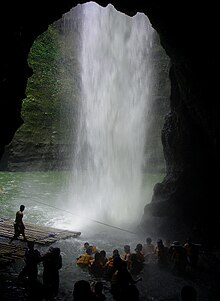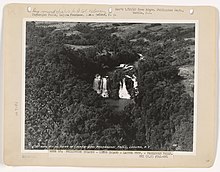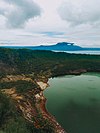
Laguna, officially the Province of Laguna, is a province in the Philippines located in the Calabarzon region in Luzon. Its capital is Santa Cruz while its largest city is the City of Calamba and the province is situated southeast of Metro Manila, south of the province of Rizal, west of Quezon, north of Batangas and east of Cavite. Laguna hugs the southern shores of Laguna de Bay, the largest lake in the country. As of the 2020 census, the province's total population is 3,382,193. It is the seventh richest province in the country in 2016.

Cavinti, officially the Municipality of Cavinti, is a 3rd class municipality in the province of Laguna, Philippines. According to the 2020 census, it has a population of 23,980 people.
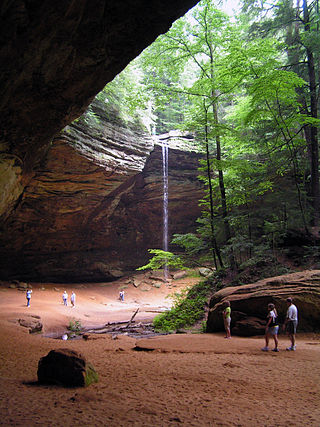
Hocking Hills State Park is a state park in the Hocking Hills region of Hocking County, Ohio, United States. In some areas the park adjoins the Hocking State Forest. Within the park are over 25 miles (40 km) of hiking trails, rock formations, waterfalls, and recess caves. The trails are open from dawn to dusk, all year round, including holidays.

Pagsanjan, officially the Municipality of Pagsanjan, is a 3rd class municipality in the province of Laguna, Philippines. According to the 2020 census, it has a population of 44,327 people.

The New River Gorge National Park and Preserve is a unit of the United States National Park Service (NPS) designed to protect and maintain the New River Gorge in southern West Virginia in the Appalachian Mountains. Established in 1978 as a national river and redesignated in 2020, the park and preserve stretches for 53 miles (85 km) from just downstream of Hinton to Hawks Nest State Park near Ansted.

Banning State Park is a state park in Pine County, Minnesota, United States, stretched along 10 miles (16 km) of the Kettle River near the town of Sandstone. The centerpiece of the park is 1.5 miles (2.4 km) of churning rapids, some up to Class IV. The daring kayakers and canoeists who shoot Blueberry Slide, Mother's Delight, Dragon's Tooth, Little Banning, and Hell's Gate each spring attract spectators to the park. Landbound visitors can hike along the state's first Wild and Scenic River amid dramatic sandstone rock formations, large potholes carved by the river, and the remains of a historic quarry. Other features are Wolf Creek Falls and Robinson Ice Cave. The park is located directly off Interstate 35. Banning State Park is open daily from 8am until 10pm. Each vehicle entering the park requires an up to date permit which can be purchased online or at the park office.

Jurassic Park: The Ride is a water-based amusement ride based on the Steven Spielberg 1993 film Jurassic Park and Michael Crichton's 1990 novel of the same name which the film is based on located at Universal Islands of Adventure in Orlando, Florida, and Universal Studios Japan in Osaka. It was formerly located at Universal Studios Hollywood in Universal City, California, where it was turned into Jurassic World: The Ride on July 12, 2019.

Ohiopyle State Park is a Pennsylvania state park on 20,500 acres (8,300 ha) in Dunbar, Henry Clay and Stewart Townships, Fayette County, Pennsylvania in the United States. The focal point of the park is the more than 14 miles (23 km) of the Youghiogheny River gorge that passes through the park. The river provides whitewater boating, recreational fishing, and kayaking. Ohiopyle State Park is bisected by Pennsylvania Route 381 south of the Pennsylvania Turnpike. The park opened to the public in 1965 but was not officially dedicated until 1971.

Difficult Run is a 15.9-mile-long (25.6 km) tributary stream of the Potomac River in Northern Virginia in the United States. The area has had many historical uses dating back to the early 1800s. Today, the area is used recreationally by visitors interested in the watershed's variety of options including hiking, biking, fishing, boating, climbing, and bird watching. The wildlife at Difficult Run is vast as 163 different species can be seen depending on the season. There are 41 different soil types found on the trail and alongside the stream. The stream is part of the greater 57.7- square-mile Drainage basin, or watershed, located in the north-central portion of Fairfax County and drains directly to the Potomac River.

A river rapids ride is an amusement ride that simulates whitewater rafting.

Piraña is a river rapids ride in amusement park Efteling in the Netherlands. It was designed by Ton van de Ven, built by Intamin, and opened in 1983.
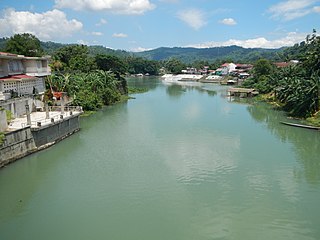
The Bumbungan River is a river in the province of Laguna in the Philippines. It is commonly referred to as the Pagsanjan River because of the popularity of the municipality of Pagsanjan and Pagsanjan Falls, one of the province's tourist destinations. The municipality of Pagsanjan was named so because it is where the Balanac River, originating from Mount Banahaw, joins the Bumbungan. Its old name, Pinagsangahan, which literally means branching, was changed to Pagsanjan during the Spanish Colonial Era.
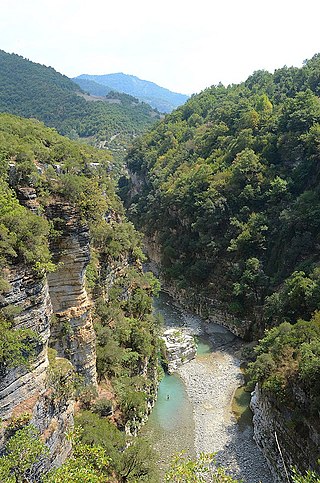
The Osum Gorge is a river gorge in southern Albania, near the town of Çorovodë. The river Osum, which passes through the town of Berat, flows through the canyon.

The Boonton Gorge is a river gorge in Boonton, New Jersey where the Rockaway River drops over several waterfalls, and travels for slightly over a mile before emptying into the Jersey City Reservoir.

Jurassic Park Rapids Adventure is a river rapids ride in The Lost World zone at Universal Studios Singapore in Resorts World Sentosa, Sentosa Island, Singapore.

Nantahala Township is located in North Carolina, United States in the part of Macon County which is west of Wayah Gap. It has a population of 1,711. "Nantahala" is a Cherokee word which means "The sun between them".
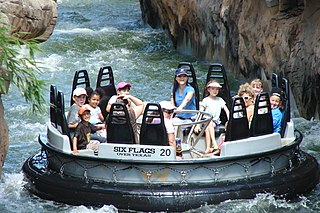
Roaring Rapids is a river rapids ride located at Six Flags Magic Mountain in Valencia, California, Six Flags Over Texas in Arlington, Texas and Six Flags Great America in Gurnee, Illinois.

Thunder River is a river rapids ride located at two American amusement parks. The first opened in 1980 at Six Flags AstroWorld in Houston, Texas, which was the first of its kind in the world. The popularity led to other similar installations at various Six Flags theme parks throughout the 1980s. Only two with this name remain. One currently operates at Six Flags Over Georgia in Austell, Georgia; the other operates at Six Flags St. Louis in Eureka, Missouri.
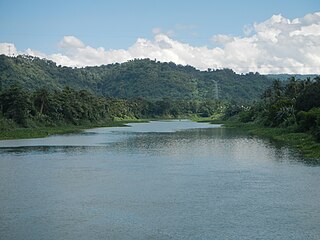
The Pagsanjan Gorge National Park is a national park and tourist zone located in the province of Laguna in the Philippines, approximately 100 kilometres (62 mi) southeast of Manila. It protects an area of 152.64 hectares around a series of gorges on the Bumbungan River which leads to Pagsanjan Falls. It is one of the oldest parks in the country and one of two protected areas in Laguna. It is situated in the municipalities of Pagsanjan, Cavinti and Lumban.
